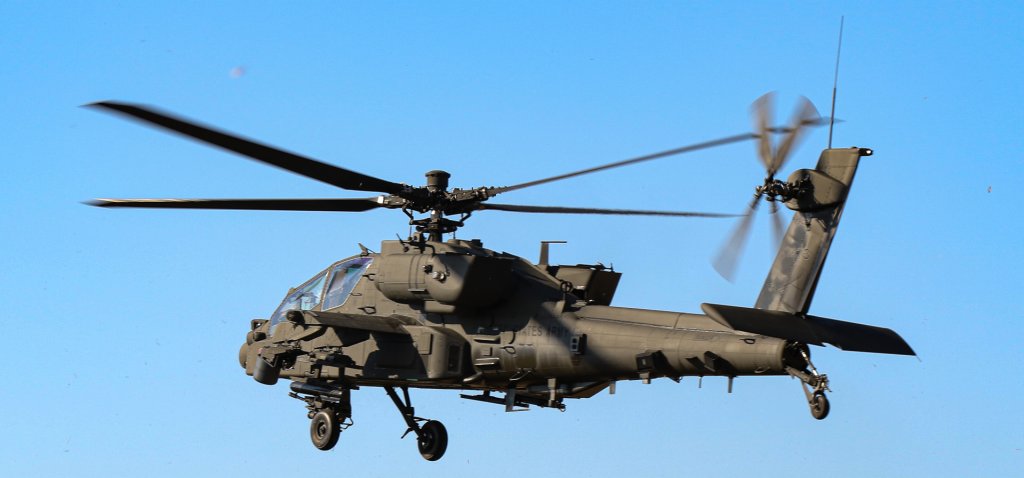The Lessons U.S. Army Aviation Is Learning From The War In Ukraine
While both Ukraine and Russia have sustained large amounts of helicopter losses due to dense traditional frontline air defenses, in some cases, drones, and attacks on bases, the U.S. Army is taking a measured approach in applying lessons learned to the future of its own rotary-wing fleet, a top commander told us. Maj. Gen. Claire Gill, commanding general of the U.S. Army Aviation Center of Excellence is adamant that not everything that happens in Ukraine applies to the U.S. Army and it’s absolutely critical that only the right lessons should be heeded.
“When we talk about Ukraine, there are a lot of lessons to be learned,” Gill told us on the sidelines of the Association of the United States Army (AUSA) annual conference in Washington, D.C.. “We focus on the right lessons to be learned.”
“There are some differences between positional warfare with drones – they’re doing World War One with drones right now in Ukraine – and the way that the United States Army fights, particularly as a member of the combined arms team and as a member of the joint force,” he added. “So, there are a lot of things that we should pay attention to there, but they’re not flying at night. They don’t plan like we plan. They don’t bring all the collective elements that we could bring to bear when we execute our operations.”

Ukraine and Russia are likely using deception as part of their operations, “but…using the night, using the terrain, using the degraded visual environment, we’ve got some pretty exquisite capabilities, and some well-trained folks, as do the Ukrainians,” Gill noted.
Gill is less convinced about Russian training.
“On the Russian side, I’ve seen some shoot downs that make me wonder, flying around the daytime, at altitude, flying the same routes. That just makes me think you can’t equate the way that they’re flying with the way that we might fly. So I think there’s a lot of opportunity there for us to learn some things, but not throw the baby out with the bathwater.”

“This is something when I talk to young aviators about what we should take away from some of the decisions that are being made in terms of divesting aircraft out of the army and investing in [unmanned aerial systems] UAS,” Gill added. “We have to make changes, right? We have to see the world the way it is. I know we’re not done with rotorcraft like I told you. Everything that we’re flying right now is going to be on the ramp for a long time.”
Army aviation assets include UH-60 Black Hawks, CH-47 Chinooks, AH-64E Apaches and heavily modified MH-60M Black Hawk, MH-47G Chinook, and AH/MH-6R Little Bird helicopters. You can read more about the future of the 160th Special Operations Aviation Regiment’s (SOAR) aircraft in our recent story here. In the coming decade, the Bell MV-75 Valor tilt-rotor aircraft is slated to come online as well. More on that later in this story.

The fate of helicopters in Ukraine has hammered home the need for missions to be mapped out with excrutiating detail before launching, Brig. Gen. Philip C Baker, the Army’s aviation future capabilities director, told us.
“We’ve got to have that ability to have really good planning tools going into mission sets,” Baker explained. “And planning tools is really driven by our data integration across all of our combat systems, intel, maneuver, fires. So when you look at NGC2 [Next Generation Command and Control] that provides us an integrated data path to bring in as much of information early on to planning, so our crews, both manned and unmanned, can plan them out right mission sets so they understand enemy, they understand the electronic spectrum, they understand weather, they understand all that before they go in.”

In addition, “when you look at the battlefield data and the speed of data that passes around the battlefield, we’ve got to be able to have that inside of our operation cells, and we’ve got to have that inside of our aircraft. And so we’re doing a lot this year onboarding new communication capability onto platforms that will bring into our experiment in March, that brings in satellite-based communication, that brings in mesh networks onto platforms to be able to drive that data flow onto platforms inside of our operation cells.”
Having standoff munitions capabilities is also key, Baker posited, pointing to the Army’s developing launched effects effort, a broad term that the U.S. military currently uses to refer to uncrewed aerial systems configured for different missions, like reconnaissance or acting as loitering munitions, which can be fired from other aerial platforms, as well as ones on the ground or at sea. For the Army, one example of a longer-range weapon being fielded for Army helicopters is the Israeli-designed Spike-NLOS. It gives Apaches the ability to hit moving targets far away with exacting precision. Far longer-ranged launched effects will also become available, including those that can decoy, jam, and attack targets many dozens, or even hundreds of miles away.
“The role of launched effects is to provide that standoff capability, not like a Hellfire at eight kilometers, but multiple, multiple kilometers out, so we can make contact with the enemy early, understand what the enemy is doing, and then have an effect on the enemy,” Baker suggested. “So that’s really the role of launched effects.”

New and improved sensors will also help rotary-wing aircraft survive by making them better able to operate in a degraded visual environment, Baker added.
“As we bring new sensors onto the aircraft, we want to be able to truly operate in those environments that give us the highest capability and survivability,” Baker pointed out. “So during darkness hours, during dust, during, you know, the environment where we need we can operate not in daytime. So we’re bringing on sensor capability to our platforms that allow us to even enhance our ability to operate at night.”
Asked about what the right lessons from Ukraine are, especially for a potential fight against a peer adversary like China, Baker said they are “really tied to that standoff range. We know standoff is going to be critical to be able to stay outside of weapon engagement zones so we can operate kind of a sanctuary.”
The Army also wants “to rely on that data network to be able to pass information quickly so we can strike quickly and affect the enemy,” Baker added.
Lessons learned from Ukraine are informing how the Army is developing the Valor, Brig. Gen. David Phillips, program executive officer of aviation, told TWZ.
“I would offer, from equipment perspective and a sustainment perspective, you can look at the equipment decisions that we’re making on MV-75 and tie them directly to these lessons learned, how we integrate launch effects, how we integrate networks, how we integrate the survivability on the platform, the survivability off board the platform, and just the aircraft survivability itself. I think we’re absolutely integrating those into our design efforts today, as we’re headed toward the critical design review that’s coming up in the spring.”

With many Russian helicopters being lost from attacks on their bases, Maj. Gen. Lori Robinson, Commanding General of Army Aviation and Missile Command, said it will be important to keep an eye on the skies.
“I think the right lesson is that everyone does have to look up,” Robinson told us. “And that includes your sustainment footprint on the ground. So we’re looking into how to make that mobile. We don’t have a mound of stuff on the ground. And then every soldier out there, whether you’re in the aircraft or you’re sustaining the aircraft on the ground, is going to have to be aware of what is above them.”
When it comes to thinking about lessons learned from Ukraine, Gill said one thing stands out. While crewed rotary wing aviation will be in the mix for years to come, uncrewed systems will ultimately be at the pointy tip of the spear.
“The Army made a decision to move toward unmanned capability,” he noted. “And so I think the lesson that I take from Ukraine and this nature of warfare is you lead with unmanned systems, right? So whether you want to create an effect, whether you want to create a diversion, whether you want to find something, and then you introduce people. When you need humans to do the things that humans are really good at doing,”
Contact the author: [email protected]


